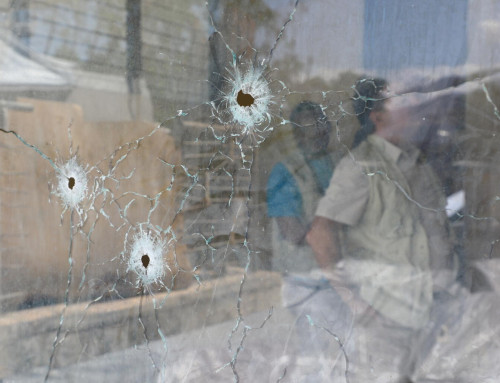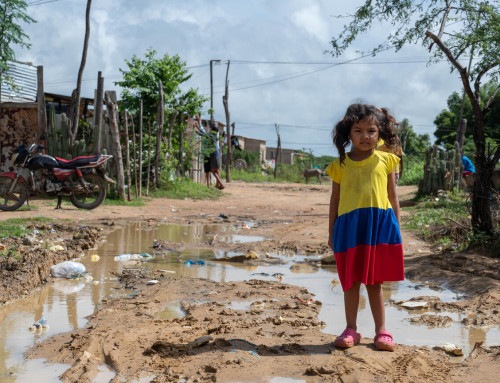Annual Report of the UN Secretary-General on Children and Armed Conflict
The year 2021 saw a deadly mix of conflict escalation, military coups and takeovers, protracted and new conflicts, as well as violations of international law, all of which had a devastating impact on the protection of children around the world. Cross-border conflict and intercommunal violence also impacted the protection of children, especially in the Lake Chad Basin and Central Sahel regions highlights the Annual Report of the UN Secretary-General on Children and Armed Conflict published today.
At least 5,242 girls and 13,663 boys were victims of grave violations in 21 country situations and one region,[1] the report covering the year 2021 shows. At least 1,600 of those children were victims of multiple violations. The report highlights an overall of 23,982 verified grave violations against children[2]. The overall number of grave violations remains similar to the number reported in 2020 and represents an average of some 65 violations every single day. For 15% of those violations, perpetrators could not be identified, making subsequent accountability extremely challenging. The killing and maiming of children was the most verified grave violation followed by the recruitment and use of children and the denial of humanitarian access.
“There is no word strong enough to describe the horrific conditions that children in armed conflict have endured. Those who survived will be affected for life with deep physical and emotional scars. But we must not let these numbers discourage our efforts. They should serve as an impetus to reinforce our determination to end and prevent grave violations against children. This report is a call to action to intensify our work to better protect children in armed conflict and ensure that they are given a real chance to recover and thrive,” said the Special Representative of the Secretary-General for Children and Armed Conflict, Virginia Gamba.
Children were most affected by grave violations in Afghanistan, the Democratic Republic of the Congo (DRC), Israel and the Occupied Palestinian Territory, Somalia, Syria, and Yemen. 8,070 children were killed or maimed, increasingly by explosive remnants of wars, improvised explosive devices (IEDs), and mines, affecting some 2,257 children. Children continued to be recruited and used with 6,310 children affected; 3,945 incidents of denial of humanitarian access were verified. In some contexts, access and security constraints hampered verification efforts for all grave violations.
“I urge all parties to conflict, whether government forces or non-state armed groups, to immediately allow access for child protection experts and humanitarian actors to do their life-saving work and to prioritize humanitarian access to children in armed conflict. Humanitarian professionals who are serving vulnerable and conflict-affected populations, including children, are doing extraordinary work, often at great risk to their safety and security. I heartily commend their courage and dedication. The international community must continue to support the work of child protection experts,” the Special Representative added.
Girls were increasingly affected by grave violations, comprising up to 30% of all victims. The Lake Chad Basin region showed a significant increase of girls affected by grave violations. “Boys and girls often face different and evolving risks across conflict situations, and The Gender Dimensions of Grave Violations Against Children in Armed Conflict published by my office in May 2022 highlights the importance of better understanding the gender dimensions of child rights violations during armed conflict to inform our prevention and response strategies,” she emphasized.
This year again, two violations showed a sharp increase: abduction, and rape and other forms of sexual violence both rose tragically by 20%. Attacks on schools and hospitals also showed an increase, compounded by the pandemic. The detention of children for their actual or alleged association with parties to conflict once again presented a somber figure, with at least 2,864 children deprived of liberty—making them particularly vulnerable to torture, sexual violence, and other abuses. “The detention of children should only be used as a last resort and for the shortest period possible, and age-appropriate alternatives to detention should be actively sought and reintegration support provided,” Virginia Gamba added.
Progress Should Mirror Our Ambitions for Children
Despite the harrowing figures for 2021 contained in the report, there was also significant progress achieved in some contexts. Overall, 12,214 children were released from armed forces and groups in countries on the CAAC agenda including the Central African Republic, Colombia, DRC, Myanmar, and Syria. The Special Representative reminds that children released from armed forces and groups should benefit from sustainable, holistic, gender- and age-sensitive reintegration support and calls on the international community to support the development of longer-term reintegration programmes for all children. Furthermore, engagement with parties to conflict by the United Nations led to notable progress in some country situations such as Nigeria, the Philippines, South Sudan, and Yemen.
While positive steps were recorded in some instances, other contexts witnessed a worsening of the situation for children. Ethiopia, Mozambique, and Ukraine have been added to the Secretary-General Annual Report as situations of concern, reflecting the dramatic impact of hostilities on children in these areas. In addition, the Secretary-General requested enhanced monitoring of violations against children in the Central Sahel Region,[3] similar to his request for the Lake Chad Basin region in 2020.
Prevention efforts, including regional engagement for children and peace dialogues, have also yielded some advancement for children. “Parties engaged in peace processes and discussions should consider integrating the rights and needs of children into their negotiations as well as their final agreements, as it remains the only way to reach a sustainable peace. The current truce in Yemen, for example, is a unique opportunity to deliver peace, safety, and protection for children,” the Special Representative emphasized. She reminds that the Practical Guidance for mediators to protect children in situations of armed conflict developed by her office remains a crucial tool in that sense.
“When peace goes missing, children are the first to pay the price of this tragic loss. Peace must prevail as it is the only sustainable way to end and prevent grave violations against children in armed conflict. In a world still affected by the COVID-19 pandemic and hit by scarcity of resources and protracted and new crises, it is more critical than ever to act to protect our children and ensure their safer and better future. This is our chance to make decisive changes for peace to last,” she pleaded.
READ:
Full Report
Summary of the Annual Report
WATCH:
###
Note to editors:
[1] The number of children includes those victims of the four individual violations: recruitment and use, killing and maiming, rape and other forms of sexual violence and abductions. It doesn’t include the number of children affected by incidents of attacks on schools and hospitals and the denial of humanitarian access.
[2] The number of grave violations includes the number of children as well as incidents of attacks on schools and hospitals and the denial of humanitarian access.
[3] Sahel’s tri-border area (Burkina Faso, Niger, and Mali)
###
For additional information, please contact:
Fabienne Vinet, Communications Officer, Office of the Special Representative of the Secretary-General for Children and Armed Conflict
+1-212-963-5986 (office) / +1-917-288-5791 (mobile) / vinet@un.org
Follow us:
![]()
![]()
![]()






